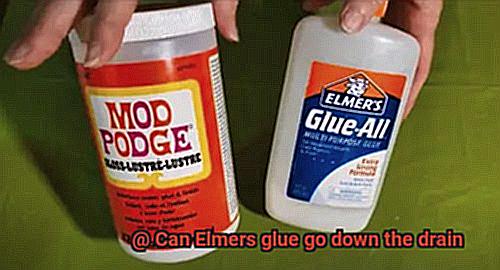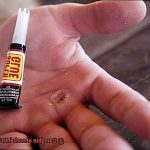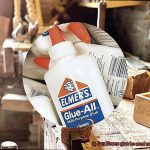As a DIY enthusiast, you’ve probably found yourself in this situation before: you’ve just finished up a craft project using Elmers glue and now it’s time to clean up. Your first instinct might be to rinse the glue down the drain or wash your hands in the sink, but hold on – can Elmers glue actually go down the drain without causing any issues?
While Elmers glue is generally considered non-toxic and safe for use in most crafts, it’s not as simple as just pouring it down your plumbing. In fact, doing so could lead to serious problems.
In this blog post, we’ll take a closer look at whether Elmers glue can safely go down the drain. We’ll delve into the chemical properties of the glue and explore the potential risks involved with disposing of it improperly. Plus, we’ll share some alternative solutions for cleaning up leftover glue without damaging your pipes or harming the environment.
If you’re someone who loves crafting and wants to ensure that you’re taking proper care of your plumbing system, then keep reading. This post will provide all of the information you need to know about disposing of Elmers glue safely and responsibly after completing your projects.
What is Elmers Glue?
Contents
Elmer’s glue is a versatile adhesive made from a mixture of polyvinyl acetate (PVA) and water. The white liquid can be used on various surfaces including paper, wood, fabric, and ceramics. It comes in three forms: liquid, gel, and stick.
The liquid form is the most popular type of Elmer’s glue, thanks to its ease of application with a brush or applicator. The gel form, on the other hand, is thicker and less runny than the liquid form, making it perfect for use on vertical surfaces or porous materials. The stick form is solid and can be twisted up and down like a lipstick tube.
Did you know that Elmer’s glue has been around since the 1940s? But it wasn’t until the 1960s that it gained popularity in school classrooms for art projects. Since then, its versatility, affordability, and ease of use have made it a staple in households across the globe.
However, when it comes to disposing of Elmer’s glue, it’s important to avoid pouring it down the drain. Although water can dissolve it, it can still cause plumbing issues and harm the environment. When poured down the drain, Elmer’s glue can clump up and create clogs by sticking to other materials in your pipes. This could lead to serious plumbing problems that may require costly repairs.
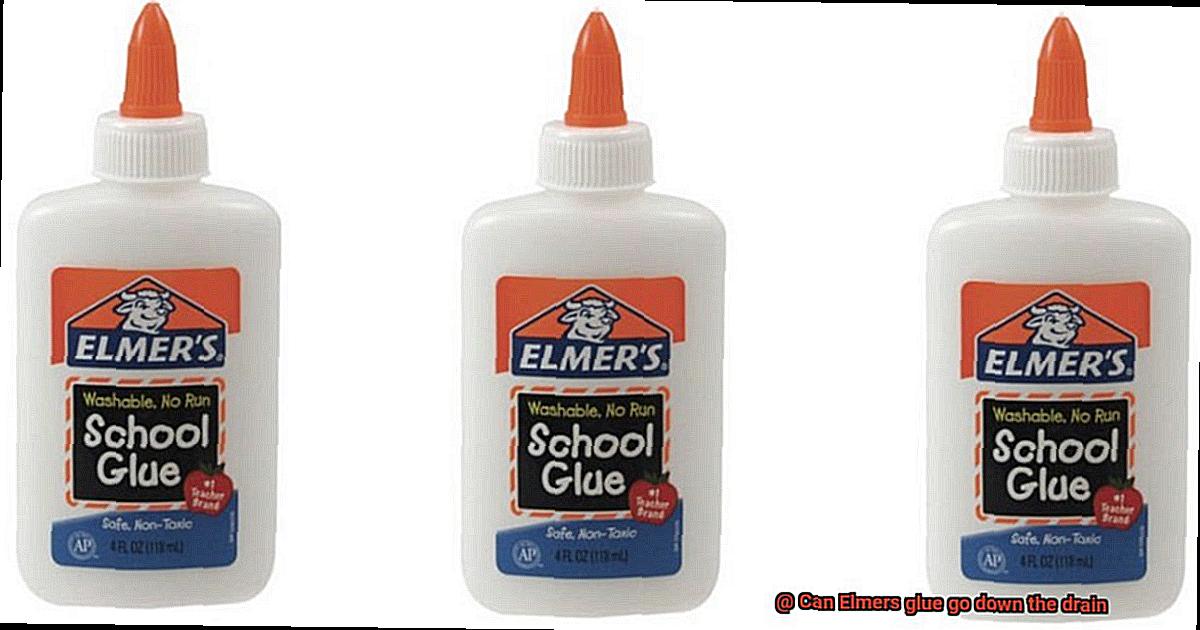
Not only can pouring Elmer’s glue down the drain cause plumbing issues, but it can also harm wildlife and their habitats if it enters waterways. Therefore, it’s best to let your leftover Elmer’s glue dry out completely before disposing of it in the trash or recycle the bottle if possible.
Why is it Not Safe to Pour Elmers Glue Down the Drain?
Whether you’re using it for your DIY projects or school assignments, it’s important to know why pouring it down the drain is not a safe option.
Elmers glue contains chemicals like polyvinyl acetate (PVA) and water. While PVA isn’t harmful to humans, it can be detrimental to aquatic life and the environment. When you pour Elmers glue down the drain, it mixes with other chemicals in the wastewater system, creating a toxic mixture that can harm aquatic life in rivers and oceans.
But that’s not all. Pouring Elmers glue down the drain can cause significant damage to your plumbing system. The glue can solidify and create blockages that cause backups and clogs. This can lead to costly repairs and potential health hazards if sewage backs up into your home.
So what’s the best way to dispose of Elmers glue? It’s simple – let it dry completely and throw it in the trash. This ensures that the glue won’t harm the environment or cause any damage to your plumbing system.
Don’t stop there – recycling the bottle or container if it’s made of recyclable materials is also an excellent choice. Properly disposing of Elmers glue not only protects the environment but also takes care of your home.
Possible Plumbing Issues Caused by Pouring Elmers Glue Down the Drain
Pouring Elmers glue down the drain may seem like a harmless act, but it can lead to significant plumbing issues over time. As an expert in this field, I can tell you that this simple mistake can wreak havoc on your plumbing system and even harm the environment.
One of the most common problems is pipe clogs. The glue hardens and sticks to the walls of your pipes, leading to a blockage that slows or stops drainage altogether. This is especially concerning in older homes with narrower pipes that are more prone to clogging.
Furthermore, Elmers glue is not biodegradable, which means it does not break down naturally over time. As a result, if it makes its way into the water system, it can accumulate in sewer lines or treatment plants and cause significant damage. This buildup can lead to costly repairs and harm aquatic life as well.
In addition, pouring Elmers glue into a septic system can disrupt the balance of bacteria necessary for proper functioning. This disruption can result in slow drainage, unpleasant odors, and even system failure.
It’s crucial to note that even small amounts of Elmers glue poured down the drain consistently over time can lead to problems. To prevent these potential plumbing issues and protect the environment, dispose of excess glue in the trash or through a recycling program.
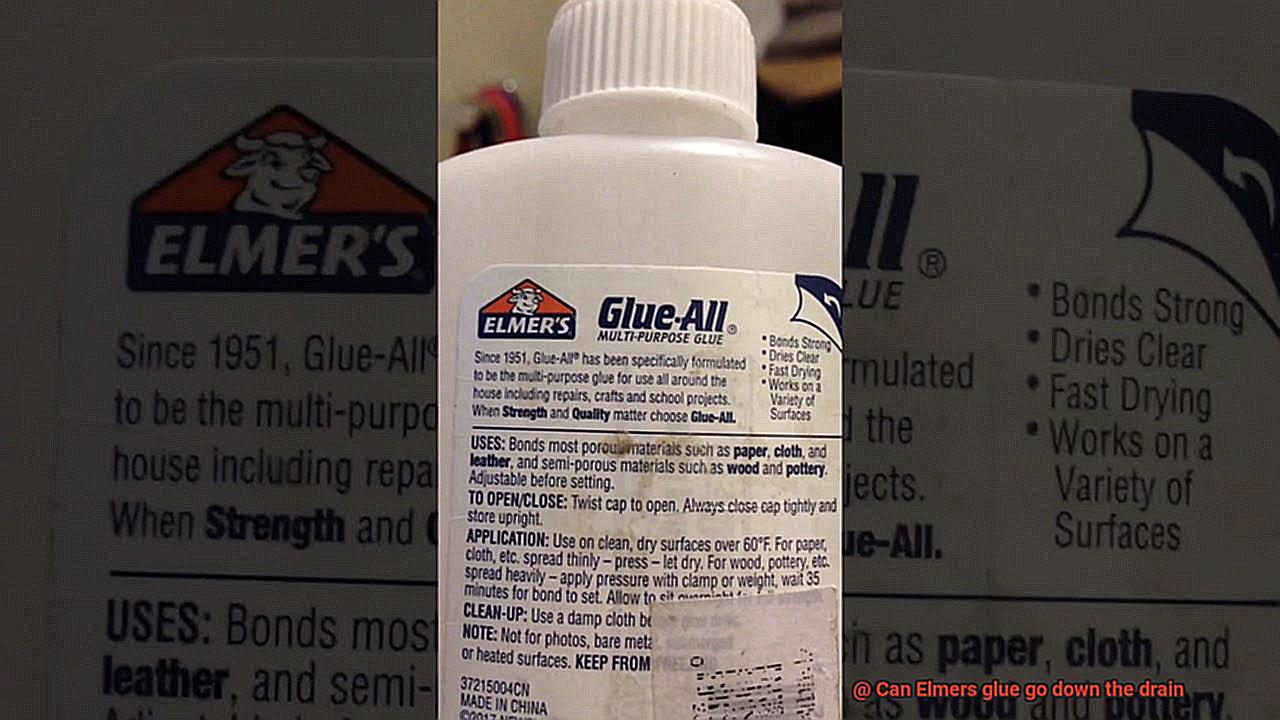
Environmental Impact of Pouring Elmers Glue Down the Drain
Pouring Elmers glue down the drain can have severe consequences for our planet and its inhabitants.
Elmers glue is not biodegradable, which means that it cannot decompose over time like organic matter. If it finds its way into our waterways, it will remain there indefinitely, posing a severe threat to aquatic life. The glue can stick to fish gills and other underwater creatures, making it hard for them to breathe and carry out their normal functions. The chemicals in the glue can also be toxic to these organisms, leading to long-term damage to their health and wellbeing.
But that’s not all. Pouring Elmers glue down the drain can also wreak havoc on our wastewater treatment systems. When large volumes of glue enter these systems, they can cause clogs and damage pipes and equipment, necessitating costly repairs and maintenance. These clogs can also lead to backups and overflows, which pose significant risks to human health and the environment.
Moreover, there are long-term consequences to consider. The non-biodegradable waste buildup resulting from Elmers glue entering the environment can harm ecosystems and contribute to pollution over time.
So what can we do to prevent these potential environmental issues? It’s simple – dispose of excess glue properly by either using it up entirely or throwing it away in the trash (after allowing it to dry out). By following these simple steps, we can help protect our environment and keep our waterways clean and healthy for generations to come.
What Should You Do with Leftover Elmers Glue?
Before you toss it in the trash or pour it down the drain, it’s important to consider the potential harm it can cause to your plumbing system and the environment. Don’t worry though – disposing of leftover glue can be as easy as pie.
One simple way to get rid of leftover Elmer’s glue is to let it dry out completely before tossing it in the trash. This can be easily done by removing the cap and letting the glue air-dry until it hardens. Once it’s completely dry, you can throw it away without any concerns about clogs or damage to your pipes.
If you have a bit of leftover glue that you don’t want to waste, storing it in an airtight container for future use is a great option. Elmer’s glue can last for several months if stored properly, so you can save money and reduce waste at the same time.
But what if you have a large amount of leftover glue that can’t be reused or allowed to dry out? In this case, pouring it down the drain is definitely not an option. Instead, pour it into a sealable plastic bag and safely dispose of it in the trash.
VHIIxqpcAkw” >
Conclusion
To sum up, Elmers glue is a fantastic adhesive that can help you tackle all sorts of DIY projects. However, it’s crucial to dispose of it correctly. Dumping it down the drain might seem like an easy fix, but it could lead to severe plumbing problems and environmental harm. The chemical makeup of the glue can cause blockages in pipes and disrupt the bacterial balance needed for septic systems to work correctly. Moreover, when Elmers glue enters waterways, it can stick to marine life’s gills and other underwater creatures or release harmful chemicals.
The best way to dispose of leftover Elmers glue is by letting it dry out completely before throwing it away in the trash or recycling the bottle if possible. If you have some glue left over that you don’t want to waste, storing it in an airtight container for future use is also a great option. However, if you have a large amount of leftover glue, pouring it into a sealable plastic bag and disposing of it safely in the trash is the most effective way to prevent any potential harm.
As responsible DIY enthusiasts, we must take care of our plumbing systems and protect the environment by properly disposing of materials like Elmers glue. By following these simple steps, we can ensure that our crafting projects are not only enjoyable but also environmentally friendly and sustainable.

